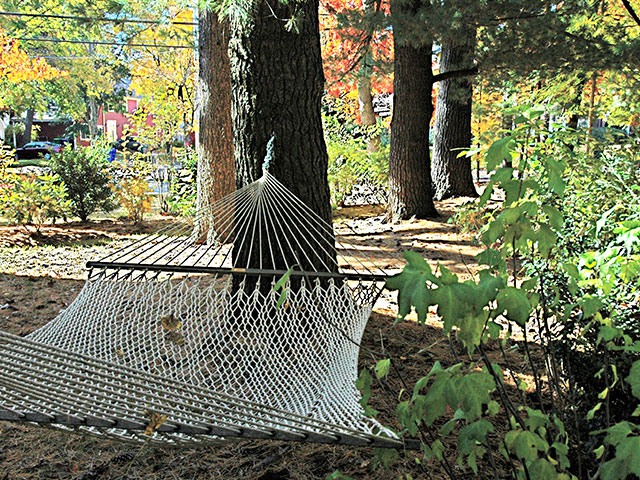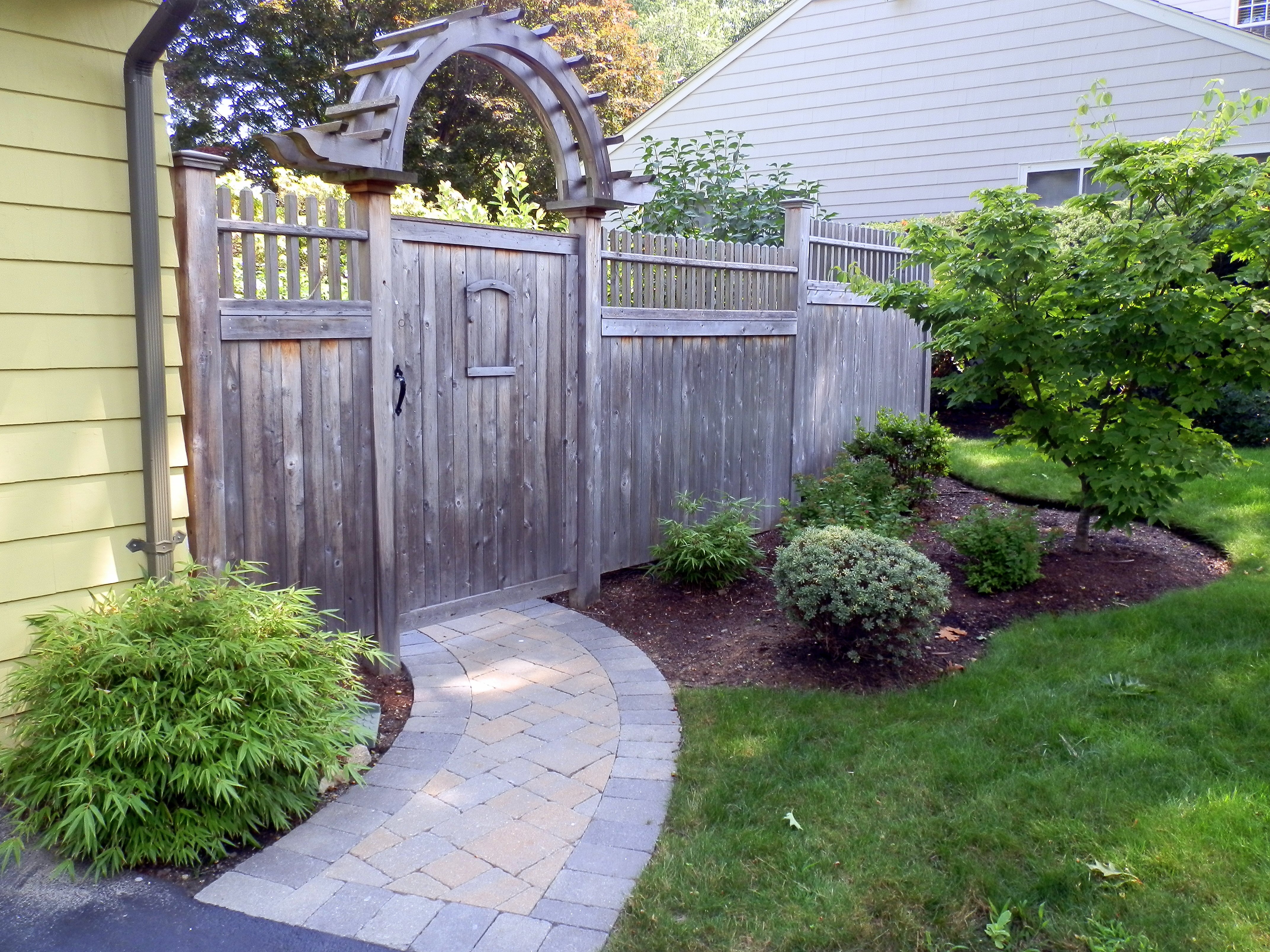The way you design and plan your meditation garden is a matter of individual preference. There are many factors that may go into deciding how to create your own space to relax and unwind. Here are some features that have both proven to be both popular and effective in creating a tranquil meditation space in your backyard:

Keep it natural
In our modern, fast-paced world, it is easy to feel disconnected from nature. Keeping your meditation space natural by using stone and wooden hardscapes will help you feel grounded. Avoid using plastic and other synthetic materials if you can. The solid feel of natural features will make your garden aesthetically pleasing and help you feel grounded.
Create an enclosed area
Many people like the feeling of an enclosed area to sit in. You may feel more secure when isolated from the hustle of the outside world. An enclosure doesn’t always mean an elaborate fence or screen — it can be as simple as having something solid behind your back. This backing can be a basic green screen made with a lattice of vines and other plants growing through it. You can also create a textured enclosure using shrubs and flowers to create a small cove. This area will give you privacy and allow you to escape the stresses of the world.

Water elements
Being near water and hearing its sounds has been shown to be relaxing. Using freestanding fountains against your garden wall, a pond-less waterfall in a small nook, or even a simple rock fountain can add a nice texture of sound to your garden. Be careful that the noise isn’t overwhelming; The bubbling water should complement other sounds of nature.
Handpicked Related Content:
Use stones
Stones can be grounding; they help center and calm you. This idea is central to the art of Japanese rock gardens. These beautiful, traditional gardens are often centerpieces in landscaping. Most have a sandy area with small boulders sticking out of them. These rocks appear as islands within the sea of sand. Traditionally a wooden rake is used to create beautiful designs in the gravel. Raking these designs can serve as a regular meditative process.
You could also create a rock grotto. It’s best to start with at least three boulders of different sizes to create an enclosed or semi-enclosed area. You can then plant ferns and moss around the rocks so that you have a natural space to retreat to. If you don’t have room for boulders, you can use smaller smooth stones to create a pathway that mimics a riverbed through your garden.

Pick relaxing colors
Colors have a proven impact on people’s moods. Start with a base of various shades of green, which complements every other shade you might choose. If you want flowers that will cheer you up, pick light and bright colors like whites, yellows, light pinks, and reds — these colors are scientifically proven to lighten the mood. If you want shades that will relax you, chose softer hues like blues and purples, which have a calming effect.
Soft shapes
When designing your meditation area, pick shapes that are relaxing. Soft edges, circles, and spirals are calming and centering. Plan your meditation area to naturally include these types of smooth-edged designs. If you're using a wall or green screen, you can even add a slight curvature to it to make it feel more subdued and gentle.
Meditation gardens are a very personal thing. The concepts listed above are trends we’ve identified over the years — but remember that what one individual likes may not work for you. With 20 years of experience creating therapeutic and meditative spaces, Moodscapes, LLC can design the perfect meditation space for your needs.
For more information and advice about how to create a calm, relaxing space in your own backyard, download our free ebook, 13 Insider Tips to Creating a Beautiful Contemplation Garden.

Moodscapes LLC is an organic landscape design and service company with a focus on helping you extend your life outdoors to enjoy activities on your own, as a family and with friends. We create opportunities for you to commune with and find joy and peace in nature and to live in an ecologically friendly and healthy environment. Please explore our landscape services and the portfolio that demonstrates many examples of our work.











